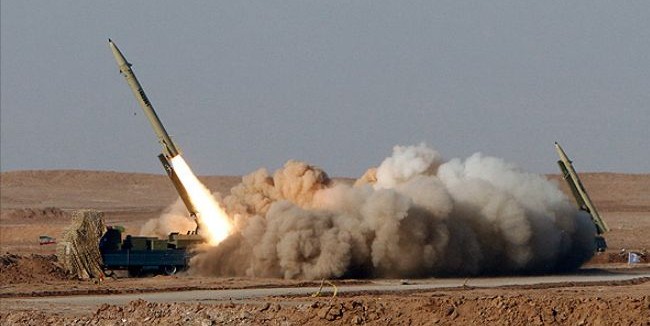Iran holds the “largest military exercise in its history,” or at least that was what Hezbollah-affiliated Al Mayadan TV channel reported on December 25. The ongoing week-long According to Al Mayadan, a Hezbollah-affiliated television station, Iran held the “largest military exercise in its history,” Ynet reported Thursday. The exercise, which has been called Mohammad Rasul allah (Mohammad, the Messenger of God) and will include “the Iranian army, air force, navy and Revolutionary Guards. 13,000 personnel are expected to participate in the exercise.
General Hashma Allah Malka, who is overseeing the drill, said that the exercise is an “[i]mportant message of peace to our friendly neighbors, but also a show of force regarding our defense abilities which sends a message to our enemies.” Army chief, General Abdolrahim Moussavi said, “One of the aims of these maneuvers is to increase our defensive capability… and to transfer this experience to young [personnel].”
According to Ynet “the army will maneuver from the Strait of Hormuz in the Persian Gulf all the way to the Gulf of Aden and even the parts of the Indian ocean.”
During the military drills, Iran’s army deployed a “suicide drone” for the first time, the Associated Press reported. Gen. Ahmad Reza Pourdastan called the unmanned aircraft as a “mobile bomb.” Iranian media claim that the drone is capable of hitting air, ground and naval targets.
However, Israeli military analyst Ron Ben Yishai argued Iran’s “suicide drone” is not a technological breakthrough. It is too large and slow to be an effective weapon against military targets. However, should the drone be supplied to Hezbollah or Hamas, it could present a problem, as it could be effective when there are nearby civilian sites, such as offshore drilling platforms or targets near the Gaza border, Ben Yishai explained. According to Ben Yishai there are two audiences for the naval exercise, “The Iranians’ purpose in the announcement was twofold; to demonstrate to the Iranian people the military technology being developed, but mainly to show the U.S. and the oil-exporting Arab nations that Iran has the power to close the Strait of Hormuz.”
[Photo: Times Asi / Flickr]




